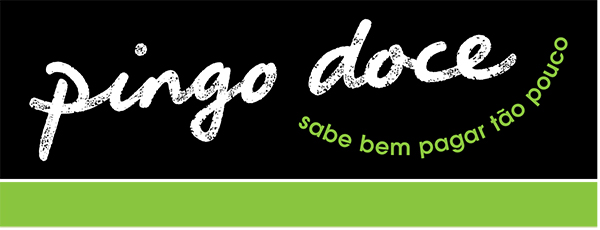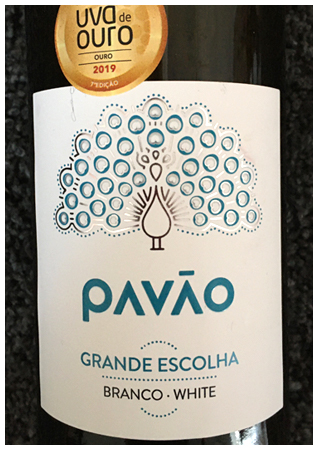In Search of my Holy Grail in Portugal
THE PERFECT PLACE TO FIND A HONEST $5 RED WINE
I’m sure you know that Portugal has some of the lowest wine prices on the planet, so during my two-month stay this winter (in better times) I went in search of my Holy Grail ““ good wine for $5 or less. Especially reds.
I succeeded, but not right away because I was looking in the wrong places. Sorry for giving the story away so quickly, but I hope you’ll still find my journey interesting as it got me thinking about the wine market and how it serves its customers. And the choices we have.
As in most European wine producing countries, the base price for a bottle of wine in Portugal can be as low as $1.50 Can, and two to three times that for most popular brands. A Canadian can get a little giddy and wish there were more drinking hours in the day. There are, as bars open earlier than at home.
I started by tasting almost every $3-$5 bottle in sight (all prices here are converted to Canadian $). Great fun. At least with the whites. Portugal produces brilliant, refreshing whites, offering lots of new adventures. Vinho Verde you know about, but today it can mean more than simple refreshment. The Douro region in particular is making some amazingly elegant, white wines, while the Encruzado grape is sure to get people buying whites from the Dao region. Most whites are not, or only lightly, oak aged.
But cheap reds were another story. A lot of what I tasted was “˜contrived’, as in using additives to create sweetness and smoothness. And why is that?
Low-priced, basic red wine can be tart or a little coarse, so winemakers feel (or are told) that it is necessary to mask these features with additives. This happens not only in Portugal, but all over the world. California has a huge annual trade fare supplying wineries with additives to improve taste. And almost all everyday-priced Californian reds are “˜adjusted’ to the degree that their customers believe “˜that’s how red wine tastes’. Fear not, there are no major health risks, other than consuming more sugar.
An interesting thing about red wine is some of the world’s classics ““ Barbera and Nebbiolo for example, are noted for their tartness and rustic edge ““ but these are not “˜everyday-priced’, and therefore enjoyed by people who welcome and enjoy these features. It seems to me, that low-priced reds are doctored so as to make them appealing to the masses, who need wine to be an easy drink (at least the reds). Otherwise they won’t buy them. These drinkers favour processed editions over the real thing, such as a Big Mac, or easy-listening music. Never forget that today’s wine popularity is largely thanks to Australia who first came up with the idea of doctoring wine ““ adding vanilla (from oak). Worked for ice cream, so why not wine.
An excuse offered by wineries for not putting inexpensive, rustic red wine on the market is they fear low-scores from expert, wine writers! In the current order of “˜professional’ wine scoring, an honest, rustic red is likely to hit 80-82 points, meaning nobody is going to buy it. But not everyone is a follower of scores (and experts) and maybe wineries need to take a look at the new trend in beer ““ people falling in love with “˜sours’. If breweries can sell “˜sours’ why cannot wineries sell red wines in a category called rustic. Slap the word right on the label.
Enough of the rant. Back to my “˜real’ red wine discoveries in Portugal. Happened thanks to a stroke of good fortune ““ as in a supermarket flyer prompting me to explore its own wines. And I was rewarded with wonderful “˜natural’ red and white wines for less than $5.

Sensational House Wines at Pingo Doce Supermarket
I could not believe the quality of the “˜house wines’ at Pingo Doce. They offer a full range of regional wines crafted by their own wine makers at prices as low as $4. And fabulous traditional-method sparkling for $5. All the reds are light to medium-bodied, non-oaked, non-doctored style. All had wonderful regional authenticity ““ could not decide which I liked best, the comforting Douro, or the playful Dao. Pingo was my Holy Grail this winter. I went back almost every day just to make sure I wasn’t dreaming. Somebody in this operation (I’m researching, and will report) has decided on authentic wines over doctored crowd-pleasers and that, along with the wines, gave me great pleasure.

P.S. One thing that might pave the way for customer acceptance of rustic reds is the current trend in “˜clay’ wines, which are made in huge amphoras, just like the Greeks and Romans did. This process creates a very dry, slightly rustic style red that the experts are “˜scoring’ high ““ to show-off their trendiness! I say bring it on ““ whatever it takes to get more real reds on the shelf. Portugal’s Alentejo region is one of the leaders with amphora and at the uber-modern Herdade Rocim winery I purchased a “˜bottled young’ amphora red that I’d love to have for my summer house red. Juicy, fun and lighthearted. As suggested by the label. One of Portugal’s icon winemakers, Dirk Nieport has for years been promoting light, rustic reds ““ also in fun labels.
Some of my favourite, generally available white wines in Portugal
(not available in Ontario)
 THE VINHO VERDES
THE VINHO VERDES
ADEGAS COOPERATIVAS de REGIAO dos VINHOS VERDES (U.C.R.L.), “˜Pavao’, Vinho Verde $5
Pavao is a turbo charged Vinho Verde. Think Perrier with alcohol, a squeeze of lime, and an extra hit of mineral. No wine knowledge needed to see the purpose of this guy ““ five star thirst quencher, aperitif or summer lunch partner.
SOALHEIRO Alvarinho, Vinho Verde $12
I broke the budget with this single grape variety Vinho Verde. The Ameal is a world class refresher, while the Soalheiro has the charm to keep you happy for hours.
QUINTA do AMEAL Loureiro, Vinho Verde $10

 EVERYDAY NICE WINES
EVERYDAY NICE WINES
ESPORAO “˜Monte Velho’, Alentejano~ $5
There is no better word to describe the experience here than Nice. Think chilling out with best friends, and no agenda. Think Pinot Grigio with some flesh and charm. A blend of Antao Vaz, Roupeiro, and Perrum grapes ““ thought you’d like to know!
CASA FERREIRINHA “˜Planalto’, Douro ~ $7
The first time I went to Portugal, a friend suggested I befriend Planalto. I did, and I have ever since. Hard not to describe it as the perfect house white. Leads with refreshment, but mild flavours and comfort are also part of the package.
 LISBON’S REFRESHER
LISBON’S REFRESHER
QUINTA DA ROMEIRA 18 “˜Provo Regia’ Lisbon $5
Big on refreshment, but I also love the savoury ““ almost pine-like flavour. Think sitting at a waterside café, quenching your thirst as the chef grills your octopus, or sardines, or whatever. Gotta loves wines that fuel your imagination ““ suggesting a place and time.
FOR LAZY AFTERNOONS
JOSE MARIA da FONSECA 18 “˜JMF’, Setubal ~ $5
The Moscatel grape is the local hero in Setubal which produces delicious sweet wines, but can also be crafted in a dry style such as this wine. You still notice the grape’s tropical perfume so the experience feels both dry and a little sweet. Perfect for those times when the mood for in-between ““ such as lazy summer afternoons.
